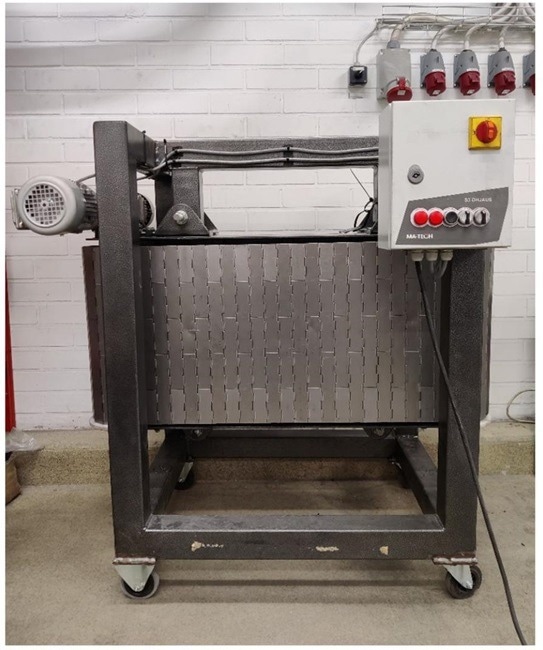Reviewed by Lexie CornerMay 24 2024
In a recent study published in Minerals Engineering, researchers from the University of Oulu unveiled a method for crushing and dry beneficiation of graphite. This new crushing technique enables ores to undergo slower compression, allowing them to react and disintegrate along the natural boundaries of various minerals.
 Laboratory-scale CCC crusher at Oulu Mining School. Image Credit: Niina Paasovaara
Laboratory-scale CCC crusher at Oulu Mining School. Image Credit: Niina Paasovaara
The Continuously Compressing Crushing (CCC) method seeks to more effectively separate valuable minerals from non-valuable minerals by leveraging the grain boundaries and microcracks present in various minerals.
Historically, wet grinding has been used to process graphite. This procedure is energy and water-intensive, but this approach offers drastically reduced water and energy consumption. In a study led by the University of Oulu and involving the Universities of Eastern Finland and South-Eastern Finland University of Applied Sciences (Xamk), CCC was tested for the first time on natural ore samples.
With the growing demand for high-quality graphite in lithium-ion battery production, the potential of the CCC method of producing coarse-grained graphite flakes is particularly important. Coarse-grained graphite flakes are highly sought after in various industrial applications due to their excellent quality and purity. This new advance will support the green transition and the development of electric vehicles, for example.
Shenghong Yang, Professor, Oulu Mining School, University of Oulu
Niina Paasovaara, Doctoral Researcher at the University of Oulu, said, “An important advantage of CCC over conventional methods is that no water is needed, so the method is completely water-free, which reduces the negative environmental impact. In addition, it was already proven in the 1950s that slow compression is the most energy-efficient way to break the ore material, so, surprisingly, the method we are refining now has not been adopted earlier.”
In the past, rock is chipped as finely as possible, which can easily cause overgrinding of the particles, complicate subsequent processing, and generate a lot of hazardous dust. In many ways, the new technique makes the crushing product rougher, cleaner, and larger in surface area, which helps with the subsequent stages of valuable mineral beneficiation.
Developing graphite-crushing technology is a step towards a more sustainable mining sector. In the future, the water and energy-saving crushing method will be tested for other types of ore containing critical raw materials. There is still a long way to go before the new crushing method can be applied on an industrial scale. It is also important to train new professionals for the mining industry that is facing a constant labor shortage.
Shenghong Yang, Professor, Oulu Mining School, University of Oulu
Paasovaara planned, “In further research, we will focus on further proving the energy efficiency at different stages of the crushing process.”
The technique is also associated with an ongoing study in green chemistry conducted in partnership with the School of Pharmacy at the University of Eastern Finland. This study concentrates valuable minerals using novel green flotation chemicals.
The aim is to make the whole process of crushing, grinding, and beneficiation of ore minerals water and energy efficient, and less waste producing. Together with the new flotation chemicals, the CCC method will ensure the cleanliness of green energy transition in the whole ore beneficiation process.
Niina Paasovaara, Doctoral Researcher, University of Oulu
The study is funded by the K.-H. Renlund Foundation and is part of the European Regional Development Fund funded project "HUGGER” – energy-efficient crushing of bio and mineral materials - Xamk.
Journal Reference:
Paasovaara, N., et al. (2024) Continuously compressing crushing towards a dry processing method, a testing for graphite ore. Minerals Engineering. doi.org/10.1016/j.mineng.2024.108713.